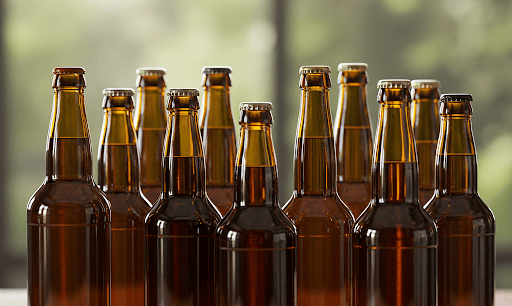Novel Wort Treatment for Improved Energy Efficiency: AB InBev's Innovation
SUSTAINABILITYBEVERAGES


In the brewing industry, energy efficiency is a top priority, especially with rising energy costs and the complexities introduced by global distribution. AB InBev has developed an innovative method to optimize the wort boiling process, a crucial yet energy-intensive step in beer production. This method, outlined in a recent patent application, introduces several energy-saving strategies while maintaining the beer’s desired flavor and stability. Here’s an overview of the key features of this patent and its potential impact on the brewing industry.
The Traditional Wort Boiling Process
The wort boiling step is integral to brewing beer or malt-based beverages. It serves several essential functions, including sterilization, enzyme deactivation, hop acid isomerization, protein-polyphenol coagulation, and the removal of unwanted volatile compounds like dimethyl sulfide (DMS). However, this process is also one of the most energy-consuming stages of production, requiring precise temperature control and significant evaporation to remove undesirable flavor compounds.
Currently, wort is boiled at temperatures above 90°C, where volatile compounds such as DMS are removed. This evaporation step plays a key role in flavor stability but comes at a high energy cost. Modern wort boiling systems aim to reduce energy usage by introducing new techniques, such as vacuum boiling, dynamic wort boiling, and sparging with inert gases like nitrogen or carbon dioxide to reduce evaporation rates and enhance DMS removal. Despite these advances, the process still consumes significant energy, driving the need for further optimization.
AB InBev’s Innovative Wort Treatment Method
The patent filed by AB InBev introduces a method for treating wort that aims to reduce the energy consumption during boiling while maintaining the quality of the final product. The process involves several key steps:
Dividing the Wort Stream: The wort from the lautering step is divided into two sub-streams. One sub-stream (50-75% by volume) is introduced into the kettle, while the second sub-stream (25-50% by volume) is directed into a holding tank. This division allows for more efficient treatment in the kettle.
Heating and Gas Sparging: The wort in the kettle is heated to a temperature slightly below its boiling point (90-96°C). During this heating phase, an inert gas (such as nitrogen or carbon dioxide) is sparged into the wort, which helps to remove volatile compounds like DMS more efficiently. The gas sparging also helps homogenize the temperature of the wort and enhances the overall treatment process.
Maintaining Sub-Boiling Temperatures: The wort is kept below its boiling point throughout the treatment process, typically for 30 to 60 minutes. This controlled heating prevents excessive evaporation, minimizing energy consumption while still achieving the desired chemical reactions necessary for beer quality.
Combining Treated Wort: After the treatment, the wort is transferred from the kettle and combined with the wort from the holding tank, ensuring the consistency of the final product.
Advantages of the New Process
This new method presents several benefits for brewers:
Energy Efficiency: By maintaining the wort below its boiling point, the method reduces the evaporation rate, leading to significant energy savings. The use of gas sparging also aids in removing undesirable compounds more efficiently, further reducing the time and energy required for the process.
Improved Beer Quality: The controlled heating and gas sparging ensure that volatile compounds like DMS are removed without compromising the beer’s flavor stability. The final product demonstrates enhanced foam stability and low haze levels, which are key indicators of beer quality.
Flexibility with Equipment: The method can be implemented in traditional wort boiling systems, including both internal and external boiler kettles. This makes it adaptable to existing brewery setups, offering brewers a straightforward way to improve efficiency without major equipment overhauls.
Potential Impact on the Brewing Industry
AB InBev’s patent introduces a new approach to brewing technology that addresses both economic and environmental concerns. The reduced energy consumption not only cuts costs but also aligns with the growing focus on sustainability within the industry. By optimizing the wort boiling process, breweries can produce high-quality beer with a smaller environmental footprint. As global beer demand continues to grow, improving brewing methods in both efficiency and sustainability will be key to maintaining profitability and minimizing the industry’s environmental impact.


